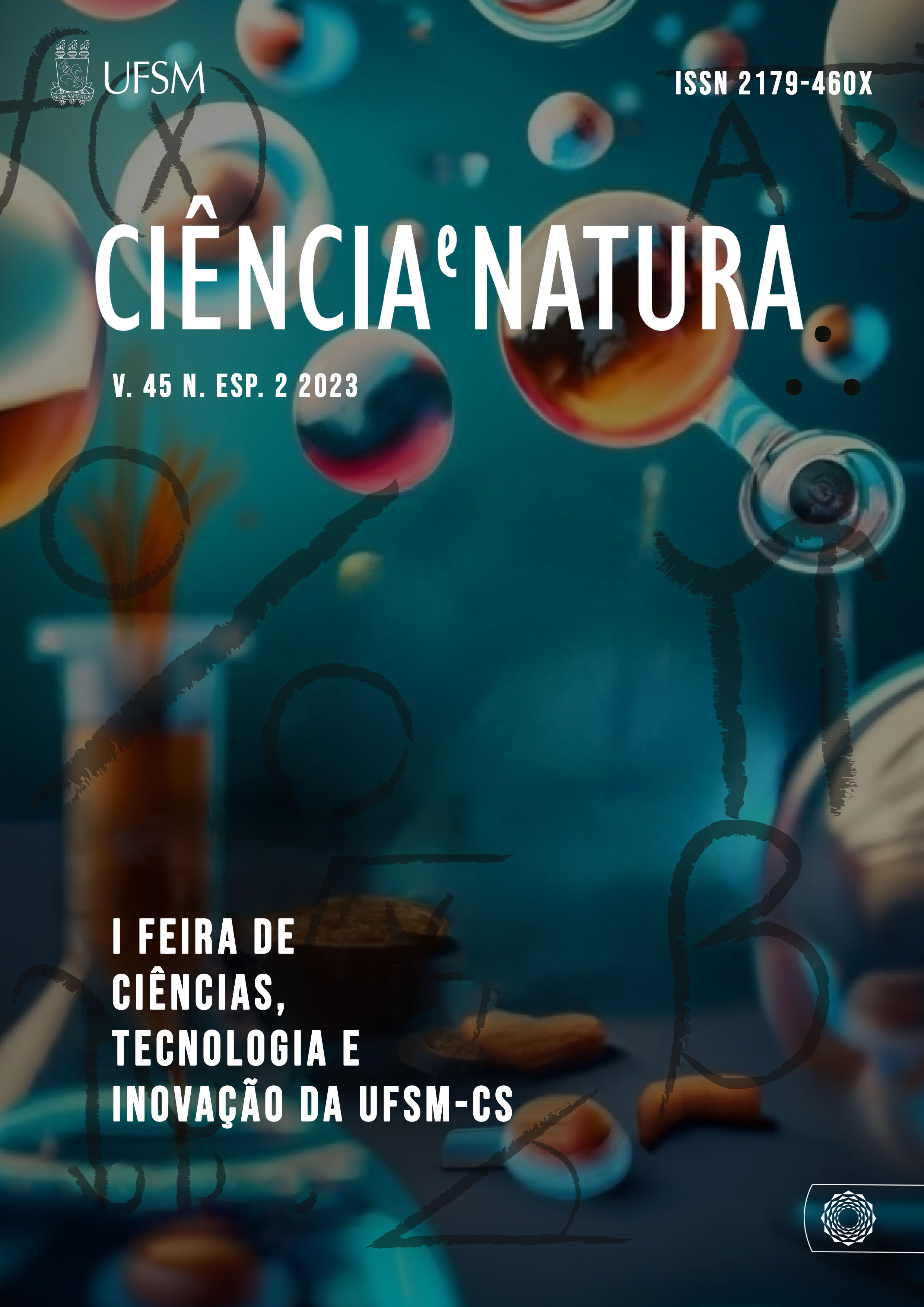Hygroelectricity through the use of waste supported iron particles
DOI:
https://doi.org/10.5902/2179460X84144Keywords:
Hygrogenerator, Hygroelectricity, Electrical energy, Iron particlesAbstract
In recent years, due to the increase in the consumption of electric energy worldwide, the generation of sustainable energy has become the focus of several scientific investigations. In this scenario, this project will propose a new technology for energy generation, based on the use of residue of Agate Stone Powder. It is worth noting that, currently, there is still no regulation for the disposal of these materials, occurring most of the time inadequately. Besides this, an iron-based particle will also be used, in order to build a cement artifact that works as an energy generator. It is expected that, at the end of the project, the developed prototype will be able to generate electrical energy in a satisfactory manner. The built prototype will have to be tested in a state of super humidity, that is, totally submerged in water, in order to evaluate its quality and efficiency. The final material confectioned, because it is a material capable of generating energy through humidity, receives the name of hygrogenerator and awakens great future possibilities for the development of new technologies, besides contributing to the sustainability of the environment.
Downloads
References
BRANDÃO, JOSÉ RONALDO JÚNIOR et al. Caracterização da cinza da casca de arroz vermelho para aplicação como material pozolânico. Energia na Agricultura, v. 35, n. 1, p. 80-88, 2020. DOI: https://doi.org/10.17224/EnergAgric.2020v35n1p80-88
BRASILEIRO,L; MATOS, J. M.E. Revisão bibliográfica: Reutilização de resíduos reutilização de resíduos da construção e demolição na indústria da construção civil. Cerâmica, V. 61, n. 358. P 178-189,2015. Disponível em: https://www.scielo.br/j/ce/a/8v5cGYtby3Xm3Snd6NjNdtQ/.Acesso em: 1 mar. 2023. DOI: https://doi.org/10.1590/0366-69132015613581860
DELLA, V. P. et al. Estudo comparativo entre sílica obtida por lixívia ácida da casca de arroz e sílica obtida por tratamento térmico da cinza de casca de arroz. Química Nova, SciELO Brasil, v. 29, p. 1175–1179, 2006 DOI: https://doi.org/10.1590/S0100-40422006000600005
FERNANDO GALEMBECK, THIAGO AL BURGO, TELMA DUCATI E RUBIA GOUVEIA. Processo de eletrização e armazenamento de cargas elétricas em materiais por adsorção/ dessorção de água e material eletrizado pelo dito processo. 2010. WO 2011/0723481.
GALEMBECK, F.; BURGO, T. A. Hygroelectricity: The atmosphere as a charge reservoir. In: Chemical Electrostatics. [S.l.]: Springer, 2017. p. 65–90. DOI: https://doi.org/10.1007/978-3-319-52374-3_6
International Energy Agency . World Energy Balances: Overview. 2021. Acesso em 05 jun. 2022. Disponível em: http:www.iea.org/reports/world-energy-balances-overview.
NOVAKOVIC, BORA ; NASIRI, ADEL. Introduction to electrical energy systems. Electric Renewable Energy Systems, p. 1–20, 2016. Disponível em: https://www.sciencedirect.com/science/article/pii/B9780128044483000013. Acesso em: 24 fev. 2023. DOI: https://doi.org/10.1016/B978-0-12-804448-3.00001-3
REVISTA ARCO. Você sabia que a população mundial está perto de atingir a marca de 8 bilhões de pessoas? Disponível em: https://www.ufsm.br/midias/arco/voce-sabia-que-a-populacao-mundial-esta-perto-de-atingir-a-marca-de-8-bilhoes-de-pessoas#:~:text=Atualmente%2C%20s%C3%A3o%20mais%20de%207,de%20Estudos%20Demogr%C3%A1ficos)%20da%20Fran%C3%A7a. Acesso em: 27 fev. 2023.
Downloads
Published
How to Cite
Issue
Section
License
Copyright (c) 2023 Ciência e Natura

This work is licensed under a Creative Commons Attribution-NonCommercial-ShareAlike 4.0 International License.
To access the DECLARATION AND TRANSFER OF COPYRIGHT AUTHOR’S DECLARATION AND COPYRIGHT LICENSE click here.
Ethical Guidelines for Journal Publication
The Ciência e Natura journal is committed to ensuring ethics in publication and quality of articles.
Conformance to standards of ethical behavior is therefore expected of all parties involved: Authors, Editors, Reviewers, and the Publisher.
In particular,
Authors: Authors should present an objective discussion of the significance of research work as well as sufficient detail and references to permit others to replicate the experiments. Fraudulent or knowingly inaccurate statements constitute unethical behavior and are unacceptable. Review Articles should also be objective, comprehensive, and accurate accounts of the state of the art. The Authors should ensure that their work is entirely original works, and if the work and/or words of others have been used, this has been appropriately acknowledged. Plagiarism in all its forms constitutes unethical publishing behavior and is unacceptable. Submitting the same manuscript to more than one journal concurrently constitutes unethical publishing behavior and is unacceptable. Authors should not submit articles describing essentially the same research to more than one journal. The corresponding Author should ensure that there is a full consensus of all Co-authors in approving the final version of the paper and its submission for publication.
Editors: Editors should evaluate manuscripts exclusively on the basis of their academic merit. An Editor must not use unpublished information in the editor's own research without the express written consent of the Author. Editors should take reasonable responsive measures when ethical complaints have been presented concerning a submitted manuscript or published paper.
Reviewers: Any manuscripts received for review must be treated as confidential documents. Privileged information or ideas obtained through peer review must be kept confidential and not used for personal advantage. Reviewers should be conducted objectively, and observations should be formulated clearly with supporting arguments, so that Authors can use them for improving the paper. Any selected Reviewer who feels unqualified to review the research reported in a manuscript or knows that its prompt review will be impossible should notify the Editor and excuse himself from the review process. Reviewers should not consider manuscripts in which they have conflicts of interest resulting from competitive, collaborative, or other relationships or connections with any of the authors, companies, or institutions connected to the papers.






